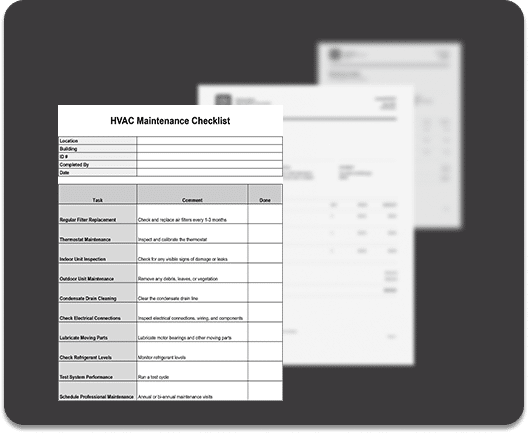Apple’s response to the antitrust lawsuit brought by the Department of Justice and a coalition of states last month, is to claim that the suit threatens “the principles that set Apple products apart in a fiercely competitive market.” But the DOJ is not challenging Apple’s design philosophy, or saying the iPhone should be more like Android, or anything like that. It argues that Apple shouldn’t use unfair, exclusionary methods to harm competition. I hope Apple doesn’t think it’s those practices that set Apple products apart. As fierce Apple critic Tim Sweeney of Epic Games wrote days before the suit was filed, “Many folks on [the X platform] think of me as an Apple hater. Nothing could be further from the truth. There is no other group of designers and engineers on earth who can build as great products as Apple when they are directed towards that end. The woes begin when they are directed not to.” I feel the same way.
Apple is known for differentiating itself through the integration of hardware, software, customer experience, and increasingly, services. This strategy is not illegal or necessarily anti-competitive. It only crosses a line when a company with market power prevents competitors from offering similar experiences or features, thereby limiting consumer choice and stifling innovation. According to the DOJ, Apple has done just that. The lawsuit alleges that Apple has harmed competition by blocking whole app categories (such as cloud gaming apps) from the App Store, preventing messaging interoperability, limiting third-party smartwatch functionality, and restricting access to iPhone hardware features.
Unlike some other lawsuits and regulatory actions around the world, the DOJ and the states are not primarily focused on Apple’s App Store and payment requirements in this lawsuit. Instead, they focus on the multifarious ways Apple designs its products to give itself an unfair advantage, using the iPhone to control related markets like NFC (near field communication) payments and smartwatches, and then using those markets to further entrench the iPhone. Ben Thompson wrote on Stratechery that this suit “attacks Apple’s integration much more than it attacks the App Store.” But I don’t think the suit is a threat to Apple’s integration – it’s about preventing Apple from using integration as a means to exclude competitors and limit the choices its users have, while harming the developers who make Apple’s platforms so valuable to begin with.
The lawsuit also contends that Apple deliberately increases “switching costs” – that is, it makes it harder to switch from iOS to Android. This doesn’t mean that every Apple user would switch if only they could. But some might. To a large extent, many of Apple’s decisions show a lack of confidence in its own products – the best way to win loyal customers is by making them happy, not by locking them in. Historically, this is exactly what Apple has done. (I’ve been a happy Mac user since 2002!) But as Apple has gotten bigger and more successful, the company has changed some of its tactics to retain customers.
Let’s discuss the Apple Watch, one of the examples in the DOJ’s complaint. The DOJ points out that the Apple Watch’s exclusive compatibility with iPhones makes users less likely to switch to Android because users would need to leave their watch behind. However, the DOJ does not demand that Apple make the Apple Watch compatible with Android – the way Apple once made sure the iPod worked with Windows. Instead, Apple is being accused of harming competitors by making it impossible for third-party watches to integrate as well with the iPhone as the Apple Watch can. If competing smartwatch manufacturers were able to access the same application program interfaces (APIs) and technical hooks as the Apple Watch, the market for iPhone-compatible smartwatches would be more competitive, and there would be more cross-platform watches, which would make it easier for some users to switch from iOS to Android. Apple doesn’t have to make the Apple Watch worse or integrate less well with iPhones to make this happen; the company just has to open the door for other companies to develop their own smartwatches that can work as well with the iPhone. In fact, more competition would likely make the Apple Watch both better and cheaper for iPhone users.
Apple has benefited from antitrust enforcement in the past, as the DOJ argues. While some in the tech industry may be skeptical of the DOJ’s claims, there is evidence to support the notion that Apple’s success, particularly with the iPod and iPhone, was aided by the antitrust case against Microsoft in the late 1990s and early 2000s.
Avie Tevanian, a distinguished computer scientist who joined Apple after the NeXT acquisition, played a crucial role in the development of iOS and other Apple platforms, including macOS (previously called OS X). In 1998, Tevanian testified extensively about how Microsoft leveraged its market position to gain an advantage in various areas. When Microsoft could not win fairly in the marketplace, it employed a combination of technical, legal, and business arrangements to advantage its products over competitors. Tevanian provided specific examples of how Microsoft, through its control of Windows and the Internet Explorer browser, used private APIs, technical changes, and hardball business tactics to disadvantage Apple’s QuickTime media playback software.
Although Microsoft never went so far as to completely block software like QuickTime (or other software Microsoft saw as a threat, such as Netscape Navigator) from running on Windows, it didn’t need to. Its more subtle technical methods – like making sure its own software performed better than competitors’ software could by reserving some functionality to itself, reporting misleading error messages, and issuing Windows updates that made it so only Microsoft software could open some file types – were typically effective enough. Moreover, it’s unclear if Microsoft could have simply blocked software it saw as a competitive threat, as Windows, unlike iOS, allows users to freely install applications without going through a centralized app store or modern requirements like code-signing. More bluntly, on the business side, Microsoft could threaten to withhold important software like Microsoft Office from the Mac platform, and repeatedly asked Apple to simply discontinue QuickTime – and it used strong-arm tactics to keep software, like Netscape’s, from being bundled with PCs.
The Microsoft antitrust case spanned years and encompassed many issues. Although the final consent decree did not address every complaint against Microsoft, it did require the company to disclose certain APIs. This requirement directly addressed the concerns raised by Apple’s Tevanian. It is plausible that during the iPod’s heyday, when Microsoft was competing with Apple through initiatives like “PlaysForSure” (an attempt to be the Windows of media players) and later, the Zune, Microsoft could have taken steps to interfere with Apple’s ability to deliver a good user experience to Windows users. Furthermore, the antitrust case likely had a “chilling effect” or, more positively, a “warming effect,” deterring Microsoft from engaging in various anti-competitive actions, even if they were not explicitly addressed in the consent decree or previous litigation.
The DOJ’s lawsuit against Microsoft also prevented the company’s “embrace, extend, extinguish” approach from crushing the open web. As a result, Apple was and continues to be a direct beneficiary of the rise of web apps – precisely what Microsoft feared in the 1990s. Windows-only software was no longer as much of a barrier preventing users from buying Macs, or later, Chromebooks. When the iPhone itself launched, the only way to run third-party software on it was through web apps. Even Bill Gates acknowledged the impact of the antitrust case on Microsoft’s mobile strategy, stating that “[i]f it hadn’t been for the antitrust case,” Microsoft would have dominated mobile the way it dominated desktop PCs. Forced to compete fairly – instead of tying Windows Mobile to Windows; or interfering with the ability of other platforms to sync with PCs (which was very important early on for mobile devices); or preventing Exchange email users from accessing their email on competing platforms – Microsoft simply lost on the merits.
Now, as one of the world’s most valuable companies with significant market power in the smartphone industry, Apple faces similar scrutiny to what Microsoft experienced in the 1990s. The parallels between the two cases are striking, with both companies accused of using their dominant market positions to stifle competition and limit consumer choice. It’s important to recognize that antitrust enforcement is not about punishing successful companies or stifling innovation. Instead, antitrust enforcement is about ensuring that companies with significant market power do not use that power to unfairly exclude competitors or limit consumer choice. By fostering a more competitive market, antitrust enforcement spurs innovation and leads to better products and services for everyone.



















